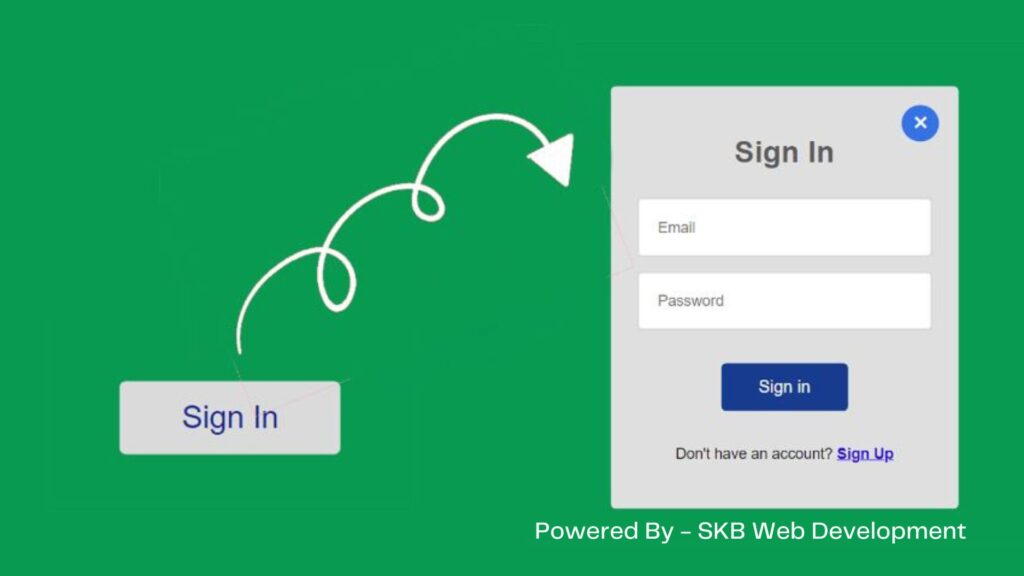In this composition you’ll produce Heart in Python. Then I’ll tell step by step how to Draw Heart Using Turtle Graphics in Python. Drawing heart using Python is veritably easy if you know introductory Python. Python isn’t just a important programming language for structure operations, but it’s also a fantastic tool for unleashing your creativity through art and plates. In this composition, we ’ll explore how to produce a heart shape in Python using the Turtle plates library.
How to Make Heart in Python
Before you can draw a heart shape in Python, you need to make sure you have Python installed on your computer. You can download the rearmost Python interpretation from the sanctioned Python website atpython.org. Once Python is installed, you ’re ready to start drawing hearts in python!
To produce a heart shape, we ’ll use the Turtle plates library. Then’s a step- by- step companion to drawing a heart in Python:
Step 1: Import the Turtle Library
The law begins by importing the turtle library, which is used for creating plates and delineations.
import turtleStep 2: Create a Turtle Object
Next, it creates a Turtle object named t. The turtle is a pen that can move around and draw on the screen.
t = turtle.Turtle()Step 3: Set the Colors
This law sets the filler color and pen color of the turtle to red. The fillcolor() system is used for filling the shapes, and the pencolor() system is used for the figure of the shapes.
t.fillcolor('red')
t.pencolor('red')Step 4: Move to the Starting Position
The penup() system lifts the turtle’s pen, so it does n’t draw, and also the goto() system positions the turtle at the starting point of the heart shape. The equals( 0,-200) place the turtle at the nethermost center.
t.penup()
t.goto(0, -200)
t.pendown()Step 5: Begin Filling the Heart
The begin_fill() system is used to start filling the shape with the specified filler color.
t.begin_fill()Step 6: Draw the Left Side of the Heart
This part of the law draws the left side of the heart. The turtle is turned left by 140 degrees, and also it moves forward by 224 units. The following for circle creates the twisted shape by moving the turtle to the right by 1 degree and forward by 2 units for a aggregate of 200 duplications.
t.left(140)
t.forward(224)
for i in range(200):
t.right(1)
t.forward(2)Step 7: Draw the Right Side of the Heart
The right side of the heart is drawn also to the left side. It creates the symmetric side of the heart shape.
for i in range(200):
t.right(1)
t.forward(2)
t.forward(224)Step 8: End Filling the Heart
The end_fill() system is used to close the hearts shape in python and complete the stuffing process.
t.end_fill()Step 9: Hide the Turtle
The hideturtle() system is used to hide the turtle itself. This is done so that only the drawn heart shape is visible.
t.hideturtle()Step 10: Keep the Window Open
The turtle.done() function is used to keep the delineation window open so you can view the python heart shape.
turtle.done()Running the Code
To see your hearts shape, save the law in a. py train and run it with a Python practitioner. A window should appear, displaying a lovely red heart shape.
Feel free to customize your python heart by changing the colors, sizes, or any other aspect of the delineation. The Turtle plates library is incredibly protean and can be used to produce all feathers of shapes and designs.
Heart Code in Python
Here’s a simple Python code to print a heart shape using text characters in the console:
heart = "\n".join([" @ @ ",
" @ @ @ @ ",
"@ @ @ @ @",
" @ @ @ @ ",
" @ @ @ ",
" @ @ "])
print(heart)Copy and bury this law into a Python terrain, and when you run it, you ’ll see a heart shape displayed in the press. This law uses newline characters( and the characters “@ ” and ” ” to produce the heart shape.
Creating a heart shape in Python using Turtle plates is a fun and engaging way to explore the cultural side of programming.
Hopefully from this composition you have learned how to make heart in python. I’ve participated numerous tutorials on Python language. You can see those papers. Comment how you like this article. know more contact us.





Thank you for your reflections.
Just wish to say your article is as surprising The clearness in your post is just cool and i could assume youre an expert on this subject Fine with your permission allow me to grab your RSS feed to keep updated with forthcoming post Thanks a million and please keep up the enjoyable work
I liked it as much as you did. Even though the picture and writing are good, you’re looking forward to what comes next. If you defend this walk, it will be pretty much the same every time.
Well written post! This is a really fantastic post, and we will link to it on our website. Continue your fantastic writing.
I loved you better than you would ever be able to express here. The picture is beautiful, and your wording is elegant; nonetheless, you read it in a short amount of time. I believe that you ought to give it another shot in the near future. If you make sure that this trek is safe, I will most likely try to do that again and again.
Somebody essentially lend a hand to make significantly posts I might state That is the very first time I frequented your web page and up to now I surprised with the research you made to create this particular put up amazing Excellent job
I simply could not go away your web site prior to suggesting that I really enjoyed the standard info a person supply on your guests Is going to be back incessantly to investigate crosscheck new posts
Somebody essentially lend a hand to make significantly posts I might state That is the very first time I frequented your web page and up to now I surprised with the research you made to create this particular put up amazing Excellent job
I do not even know how I ended up here but I thought this post was great I do not know who you are but certainly youre going to a famous blogger if you are not already Cheers
Hi i think that i saw you visited my web site thus i came to Return the favore Im attempting to find things to enhance my siteI suppose its ok to use a few of your ideas
https://pravgruzchiki.ru/
555
555
555
555
555
-5) OR 748=(SELECT 748 FROM PG_SLEEP(12))–
555
555
555
555
‘;print(md5(31337));$a=’
555
‘”()&%aAJQ(9594)
http://shurum-burum.ru/
Your posts always provide me with a new perspective and encourage me to look at things differently Thank you for broadening my horizons
Your posts always provide me with a new perspective and encourage me to look at things differently Thank you for broadening my horizons
демонтаж москва
https://demontagmoskva.ru/
ミリオンゴッド-神々の凱旋
非常に実用的な内容で、読んで良かったと思います。
geinoutime.com
모든 이론이나 종교는 사람들이 항상 이유를 묻는 것을 가장 두려워합니다.
geinoutime.com
Zhu Houzhao의 흥분된 모습을보고 Zhang Queen Mother는 깜짝 놀랐습니다.
Some times its a pain in the ass to read what website owners wrote but this site is very user genial! .
BLOOD+ 二人の女王
黄門ちゃま喝
音楽と演出が楽しく、プレイ中に笑顔になれます。リラックスできます。
BLOOD+ 二人の女王
https://lucky9casino.com/tags/%E3%82%AF%E3%83%BC%E3%83%9D%E3%83%B3
リーチ演出が多彩で、どのタイミングで大当たりが来るかワクワクします。
CRグラップラー刃牙
CR北斗の拳5 覇者
紫イミソーレ(4発1)
めんそーれtw
CRぱちんこ仮面ライダーMAX EDITION
I was able to find good info from your articles.
戦国BASARA 2
k8 カジノ パチンコ P とある魔術の禁書目録
シンプルなルールで、初心者でもすぐに楽しめるのが良いです。気軽に挑戦できます。
スマスロ北斗の拳
https://pachika.com/news/post-5196.html
友人と一緒にプレイすることで、楽しさが倍増します。共に喜ぶ瞬間が嬉しい。
モンスターハンター月下雷鳴
オンラインカジノ
北斗の拳 修羅の国篇
ガッツだ!!森の石松
CR牙狼魔戒之花 Ver.399
めんそーれtw
https://injapan.today/realtime/id7030.html
人気アニメを基にしたパチスロで、ファンにはたまらない作品です。リアルな演出が楽しめます。
BLOOD+ 二人の女王
https://injapan.today/realtime/id616.html
音楽と演出が楽しく、プレイ中に笑顔になれます。リラックスできます。
CR牙狼FINAL Ver.399
https://injapan.today/topics/take-advantage-of-ones-position
ビジュアルとサウンドが迫力満点で、プレイ中に没入感が増します。特にバトル演出が楽しい。
ラブ嬢
スマスロヴァルヴレイヴ天井
ボーナスゲームが楽しく、毎回期待感があります。特に大当たり時は圧巻。
雷電(ピンク)
https://z6hh.org/2304
美しいグラフィックと音楽が、プレイ中の没入感を高めます。
P閃乱カグラ2
ダンバイン 時速
CR びっくり戦国無双 Light Edition
P とある魔術の禁書目録
CR 獣王
CR びっくり戦国無双 Light Edition
https://xn--k8-9g4a3b4f.site/shinbun/post-1638.html
音楽と演出が楽しく、プレイ中に笑顔になれます。リラックスできます。
P フィーバー戦姫絶唱シンフォギア3黄金絶唱
https://www.k8pachinko.online/sitemap.xml
大当たりの瞬間は、まさに神の祝福。興奮が止まりません。
琉球の守護神
https://xn--k8-9g4a3b4f.site/yosou/post-2949.html
リーチ演出が多彩で、どのタイミングで大当たりが来るかワクワクします。
Noodlemagazine I genuinely thank the owner of this site for offering such a fantastic piece of writing here
FlixHQ Your site is lovely, but you should look into fixing the spelling in a few posts. Several of them have errors that can be bothersome, but I’ll definitely come back again.